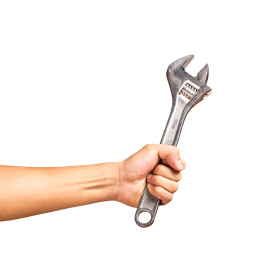Introduction
The Structural Modeling Module (SMM) in DepthInsight TM utilizes raw data from geoscientist interpretations to build accurate structural models. The module utilizes triangulation gridding and optimizing algorithms that are unique technologies to GridWorld, and allows the system to build any type of complex structural model. This methodology allows the system to deal with relationships between; faults & faults, horizons & horizons, and also faults & horizons, which is the key in constructing the most realistic real world reservoir models.
Technical Differentiation
Many of the industry software today cannot handle the construction of complex structural models, and if they can create these the actual process of building them is extremely difficult and time consuming. The DepthInsight TM system has the most powerful modern techniques that allow the system to model basic structures and also any type of complex geological structures, and construct these easily, effectively and efficiently.
Effective
Model any complex geological scenario without any simplification.
Complex faults include: thrust faults, over thrusts, y faults, lambda faults, dying faults.
Complex stratigraphy: salt domes, volcanic cones folds, pinch outs and unconformities.

Easy&Efficient
Speeds up many workflows and makes much use of automation:
Automatic splitting and naming of faults, automatic generation of horizon and fault tip loops;
Fast and easy editing of faults or horizons, instant updating of faults/ horizons and models
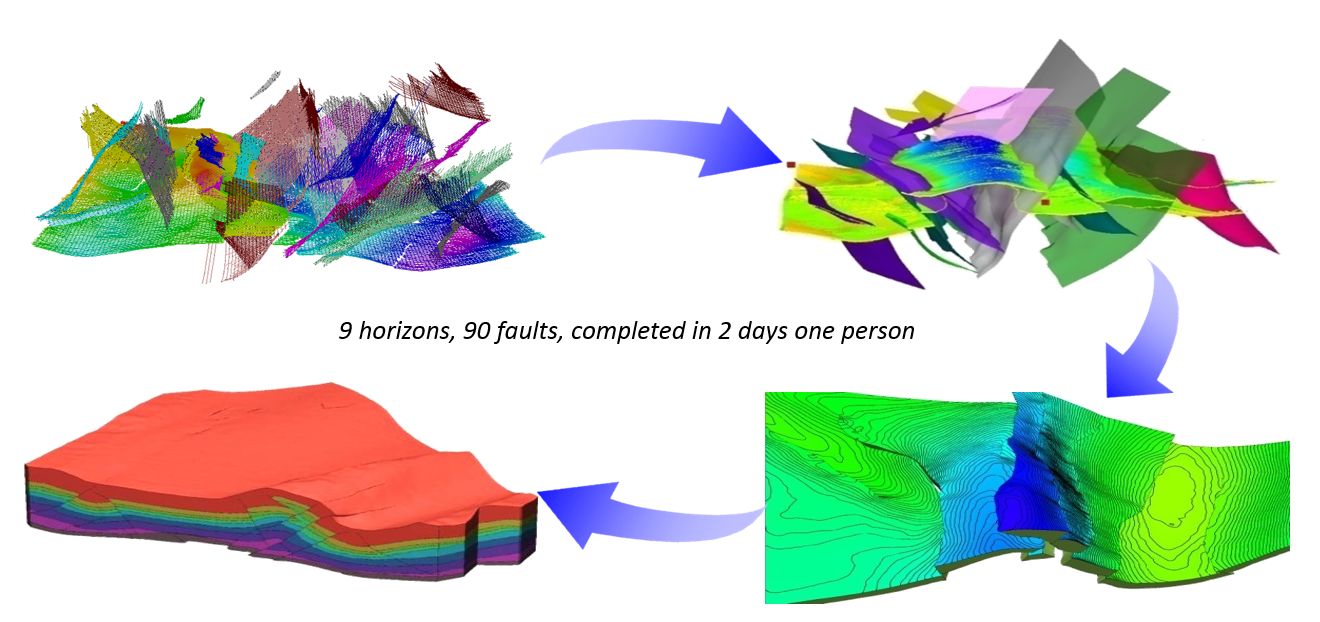
Enabling
Enables various analysis and computation. Such as, structural restoration and geo-mechanics.
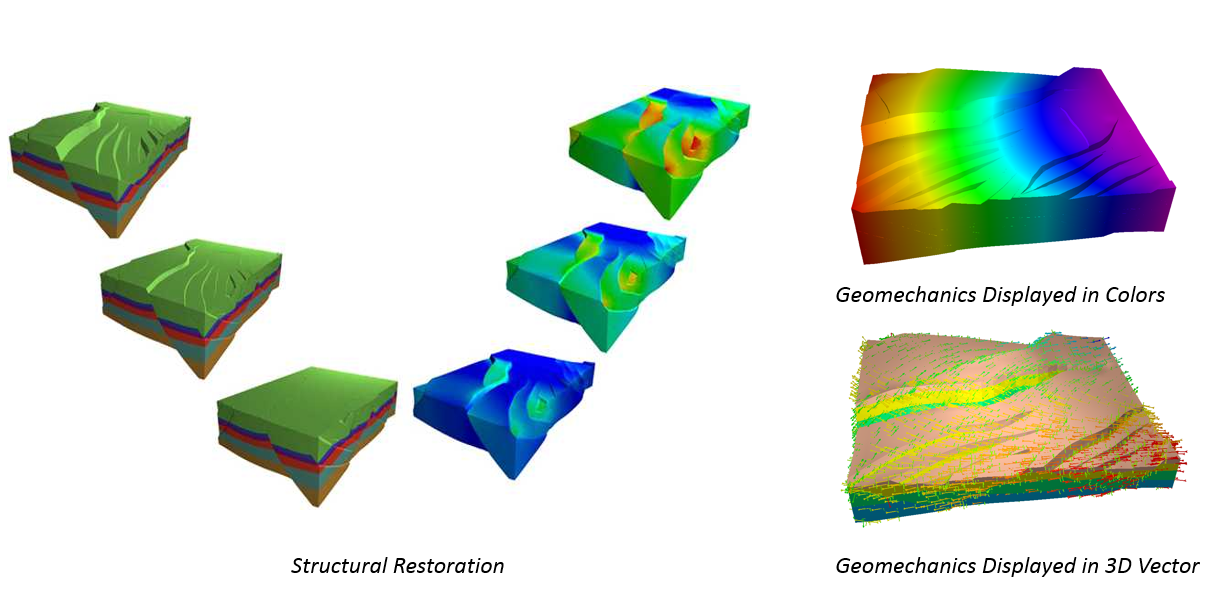
(More information refer to Restoration and Geomechanics Module)
Enormous
Break away from the limits of large area and high precision& Seamlessly Splicing Technology;
Provide collaborative working environment for multi persons, greatly improving the working efficiency.
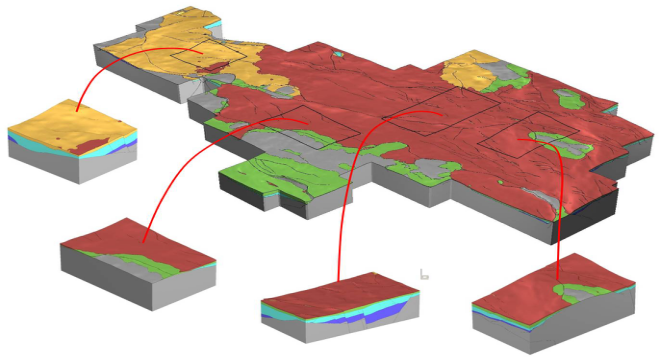
(More information refer to Enormous Modeling Module)
close
Main Functions
Structural modeling needs to import the raw data which describes the geometric shape of fault and horizon. The data usually comes from interpretation systems, geo-modeling software or structural maps.

Original interpretation data of faults and horizons
Fault modeling is to generate a smooth surface of each fault automatically and makes sure the fault surface can represent the fault shape precisely. At the same time, fault boundaries are generated automatically. And also, fault model can be easily edited by the way of human-computer interaction such as: edit the raw data, add control points to control the fault surface shape, edit fault boundary and specify the truncation relations between faults, etc. After that, DepthInsight can update the fault surfaces according to the your editing instantaneously.

Build fault model
Horizon modeling is to generate a smooth surface of each horizon automatically and makes sure the horizon surface can describe the original data precisely under the faults’ constraint. The same as editing faults, users can edit the horizon data by the way of human-computer interaction. The methods include: edit the raw data, add control points to control the horizon shape and specify the contact relations between horizons, etc. DepthInsight can update the horizon surfaces instantaneously responding to user’s editing action.
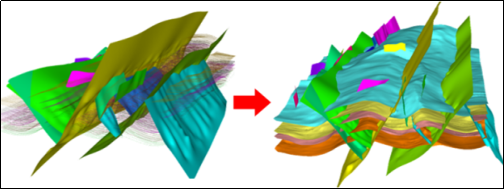
Build horizon model
After building fault and horizon surface model, generate zones. As we can see, the main workflow of structural modeling is fault modeling, horizon modeling and generating zone. Building a structural model is actual a process of cyclical iteration of the main workflow.

Generate zones
It needs to be inspected after the initial model has been built. The methods include: compare the initial model with the original data, create sections to visualize interior structure of the model and compare the cross-sections of the model with seismic profiles. After inspecting, adjust and update the model. More specifically, seismic interpretation data has a relatively high lateral continuity, which is good at building geometric framework. Well data has a high resolution in vertical direction, which is used for inspecting and adjusting the geometry model. An accurate structural model can be achieved in the way of well-seismic combination.

Inspect & adjust model
Profiles and sections. Once the structural model is done, the profiles and sections can be generated and edited very easily and quickly at any location of any direction.
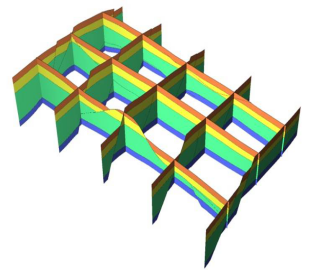

Sections & Profiles
close
Demonstration Video
Structural Modeling Workflow and Complex Examples
This video shows three complex model examples to give a glimpse of DepthInsight’s modeling ability. Also a structural modeling workflow is included to show the efficiency and convenience of the modeling process.
Demo Link: https://youtu.be/Ws6Ho5__rS4
close
Case Study
Case 1:Practice data model

4 horizons, 17 faults completed in one hour one person
Case 2: Thrust fault model

8 horizons, 90 faults completed intwoworkdays one person
Case 3: Hailar Model
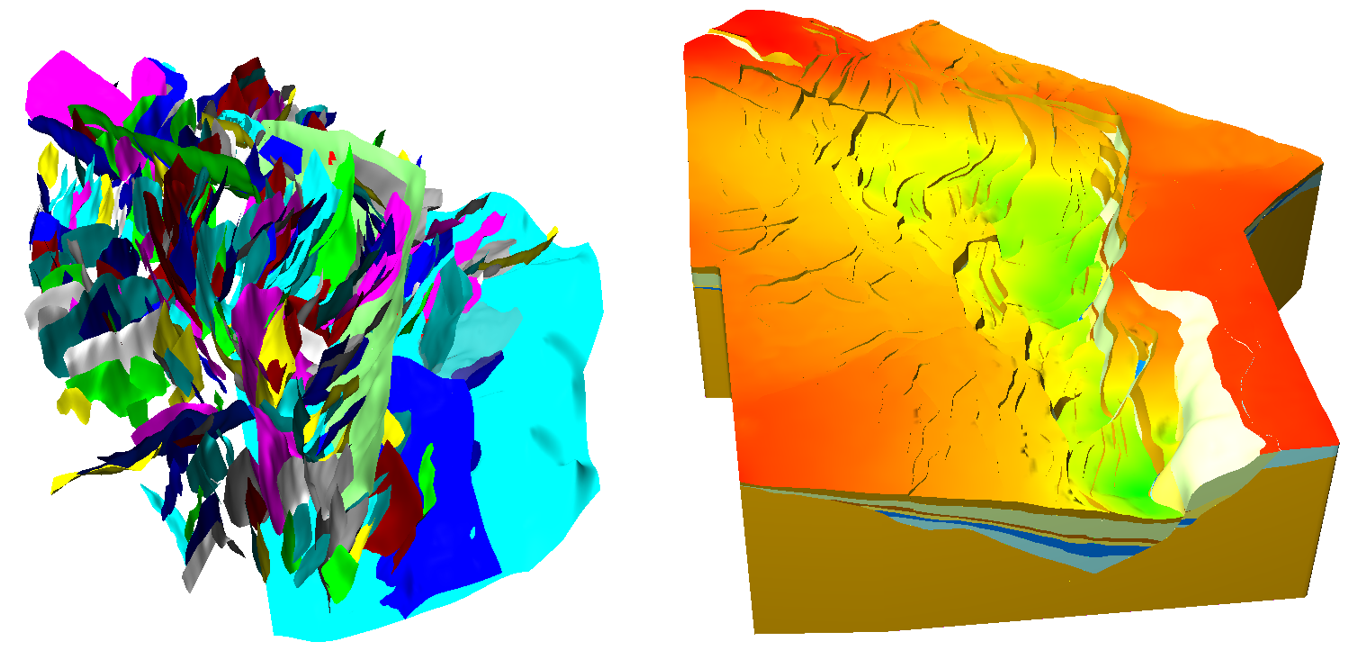
8 horizons, 280 faults completed in five work days one person
close
Special Tips
1: The working pattern of DepthInsight
A sub-workflow of structural modeling is fault modeling, horizon modeling and zone generating. After each data editing action of fault or horizon, the sub-workflow will be worked again to get the updated model. Therefore, the workflow of structural modeling is actually a process of cyclical iteration of sub-workflow (fault modeling, horizon modeling and zone generating).
2. The modeling method of DepthInsight
The underlying modeling method belongs to data-driven approach. In other words, user do not directly edit the generated surfaces of faults and horizons, but to edit the relevant data such as editing the discrete points, adding control points, drawing boundaries, and specifying contact relationship. The advantage of this method is that user not only get a reasonable structural model but also a set of suited data. It is very quick to replicate the model by the suited data without editing.
3. The structural model is just a “framework” or say “cover”
The structural model is just a “framework” which is encircled by horizon surface, fault surface and boundary cuts. That is to say, it is empty inside now. But when we need, we can quick generate stair-step grid, truncated rectangular grid or PEBI grid based on the accomplished structural framework. It’s another modeling engine may be known to few users now.
close


